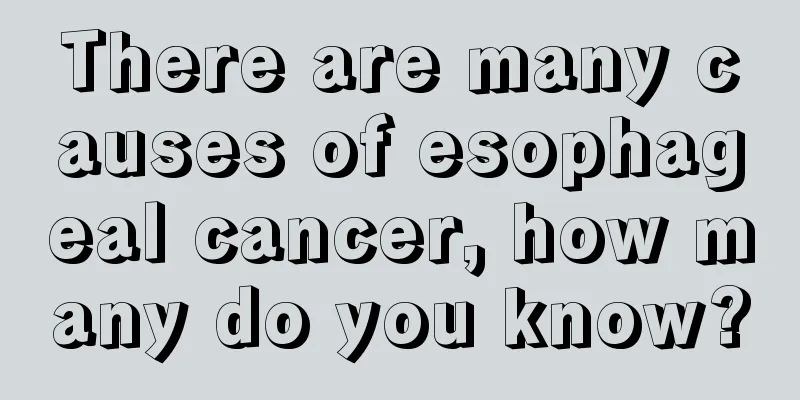Does lymph node biopsy hurt?

|
Lymph node puncture biopsy is a common examination method. We know that lymph node enlargement is very common in life. It is mostly caused by infection. If the cause is unknown and antibiotics are not effective, lymph node puncture biopsy can be performed to identify the cause. This will rule out some more serious diseases. Let's take a look at this aspect. Is lymph node biopsy painful? When lymph nodes are swollen, the first thing that is usually considered is an infection in the body. Find the cause of the disease and eliminate it. If the cause is unknown and anti-infection treatment is ineffective, puncture may be considered. Lymph node puncture is like a regular injection and takes only a few minutes. The specific operation is to disinfect and then use an empty needle to pierce the lymph node to extract some fluid. It won't hurt, don't be nervous. After puncture, apply local compression and bandage, and family members should help to press for a while. Biopsy Technique Lymph node biopsy is a invasive method to obtain lymph node tissue for pathological examination. There are two main methods to obtain lymph node tissue: 1. Lymph node puncture; 2. Lymph node resection. Lymph node resection will not stimulate other lymph organs to cause abnormalities; if the removed lymph nodes are normal, it will have no effect on the body. 1. Lymph node puncture to obtain the aspirate to make smear cytology or pathogen examination can assist in the diagnosis of diseases that cause lymph node enlargement, such as infection (bacteria, viruses, fungi, insects), tuberculosis, leukemia, lymphoma, malignant tissue, metastatic cancer, etc. 2. Operation steps: Select an enlarged lymph node suitable for puncture → routinely disinfect the skin and operator's fingers → fix the lymph node with the index finger and thumb of the left hand → use the 18-19 gauge needle of a dry syringe in the right hand to pierce the lymph node along the long axis of the lymph node → withdraw the needle while aspirating vigorously → remove the syringe, inflate it, then aspirate the blood in the needle and spray it onto the smear to make a uniform glass slide, stain it for microscopic examination → cover it with sterile gauze after surgery and fix it with tape. 3. Notes: ① It is best to puncture in front of the iliac cavity to avoid excessive lipids that may affect the smear. ② If the aspirate cannot be extracted, the needle can be punctured continuously in different directions. ③ Pay attention to selecting larger lymph nodes and stay away from large blood vessels. ④ Pay attention to the characteristics of the aspirate before smearing. |
<<: The dangers of kidney biopsy
Recommend
What to do with gallbladder cancer in the elderly
Gallbladder cancer can seriously harm our health,...
Tips for self-testing for formaldehyde
If you are planning to renovate your home, the fi...
What is the best time to do back-to-wall exercise?
People usually do various kinds of exercises. In ...
Fever persists for a week
Fever is a very common disease, and many factors ...
What to do if canned yellow peaches turn sour
Yellow peach is a very common fruit in our life. ...
Individualized treatment of prostate cancer with traditional Chinese medicine
Prostate cancer is an androgen-dependent malignan...
Is hamartoma hereditary?
Many young patients with hamartomas, because they...
What can be used instead of MSG
Sometimes, many people say that MSG is a harmful ...
What does bv positive mean
When some women undergo gynecological examination...
Methods to remove blood waste
The human body is full of blood, and the health o...
How can patients with hyperthyroidism provide good home care?
Hyperthyroidism is a very common thyroid disease ...
The efficacy and function of plum wine
Although plums are very common in our daily life,...
When is the best time to dehumidify?
Most people usually have moisture in their bodies...
Can I drink water the night before the physical examination?
Many people will consult their doctors before a p...
How to use diapers without them falling off
Many mothers always use diapers improperly for th...









